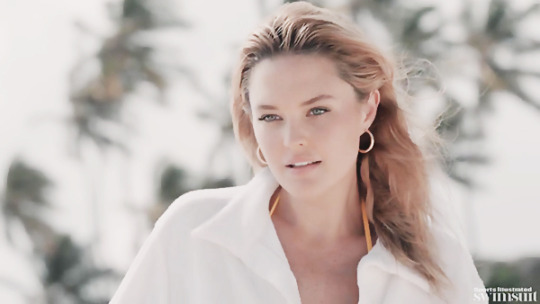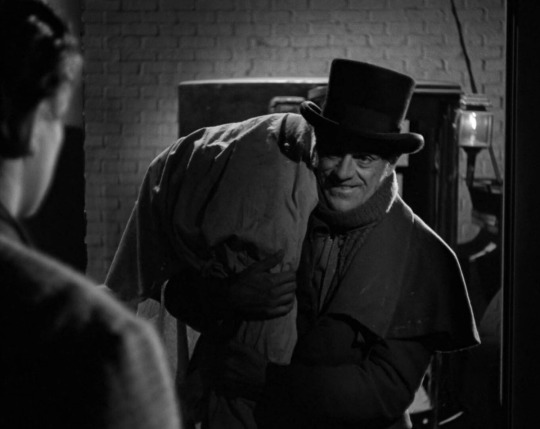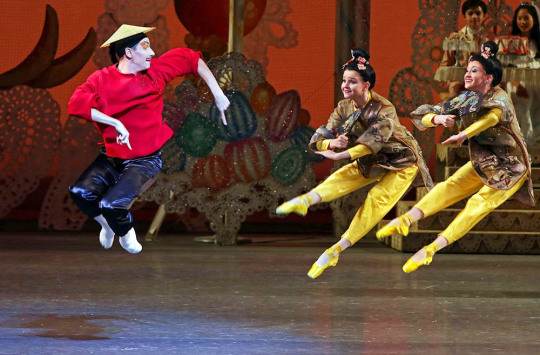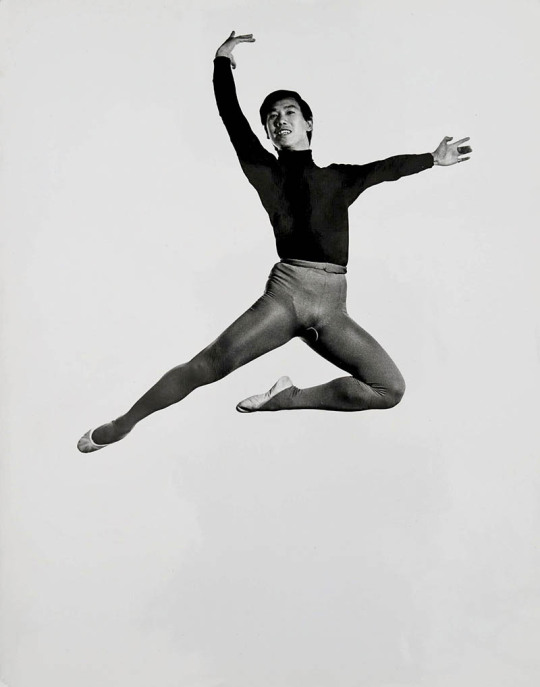#Georgina Burke
Explore tagged Tumblr posts
Text

Georgina Burke
93 notes
·
View notes
Photo





https://www.instagram.com/missgeoburke/ x si swim 2023
#georgina burke#curve model#curvy model#bodyposi#body positive#body positivity#body acceptance#bopo#curvy#thick#si swim#sports illustrated#si swim 2023
610 notes
·
View notes
Text



👀👀
19 notes
·
View notes
Photo


Josephine Skriver at the SI Swimsuit on Location event hosted by SI Swimsuit in Hollywood, Florida - May 21, 2022.
#josephine skriver#events#si event#hollywood#may 21#2022#yumi nu#lorena duran#christen harper#georgina burke
59 notes
·
View notes
Photo

Georgina Burke, Lily Aldridge and Joan Smalls by Koto Bolofo for Ralph Lauren Holiday 2022
#Georgina Burke#lily aldridge#joan smalls#koto bolofo#ralph lauren#Lookbook#fashion#mode#moda#model#models#supermodel#Supermodels#women's fashion#womenswear#style#2022#my upload
14 notes
·
View notes
Text




Cora Emmanuel, Blanca Padilla and Georgina Burke for Lauren Ralph Lauren Jamaica Resort 2024
#Cora Emmanuel Blanca Padilla and Georgina Burke for Lauren Ralph Lauren Jamaica Resort 2024#fashion#style#model#beauty#black model#black fashion#cora emmanuel#blanca padilla#Georgina Burke#Lauren Ralph Lauren
3 notes
·
View notes
Photo

9 notes
·
View notes
Text

Georgina Burke
#Georgina Burke#woman#beauty#pretty#model#eyes#lips#sexy#hot#beautiful body#legs#thighs#beautiful hips#sexy hips
39 notes
·
View notes
Text
La Iena (1945)
Benvenuti o bentornati sul nostro blog. Nello scorso articolo abbiamo cambiato argomento e, dopo diverso tempo, siamo tornati a parlare di letteratura con un’opera fantasy italiana che mi ha stupito parecchio, Malena senza sonno di Daisy Franchetto. Malena ha avuto da poco un aborto spontaneo che l’ha portata a cadere in una profonda depressione e per questo si isola da tutto e da tutti. Poco…

View On WordPress
#Albert S. D&039;Agostino#Bela Lugosi#Boris Karloff#Burke and Hare#Carlos Keith#Darrell Silvera#Donald Fettes#Edimburgo#Edith Atwater#film#Georgina#Henry Daniell#horror#Il trafugatore di salme#J.R. Whittredge#Jack J. Gross#John Gray#John Sturtevant#La Iena#La Iena 1945#La Iena film#Mel Berns#movies#Philip MacDonald#Recensione#Recensione film#Renié#Rita Corday#RKO Radio Pictures#Robert De Grasse
1 note
·
View note
Note
Do you have a list of Toyfolk inhabitants?
The Misfits:
Charles "Charlie" Scopp
Dolores "Dolly" Conley
Eleanor
Gabriel "Gabe" Bianco
Jennifer "Jen " Spagnoletti
Maria Martinez
Melissa "Mel" Ray
Pauline "Paul" Carson
Tabitha "Tammy" Yokoi
André?
Others
Apalala
Brendan
Carol
Flo
Morgan
Cadencia Martinez?
Floretta
Phineas Barnum
Romeo "Candlewick"
Hans
Dorothy "Dollie"
"Moonracer"
Anabel
Ayane Takahashi
Eli "Spots" Banas
Hanuman
Hensley
Molly
Octavia
Silus Zelinski
Suzanne "Zanny" 🏥
"Steadfast Tin Soldier"
"Paper Ballerina Doll"
"Babs"
Fan Characters (this list is incomplete)
Alfons
Alma Irons
Amy "Amy Sh-" Shipperton
Artie
Aster
Barnaby Alberto Alexander
Beatrice "Beau" Pierceson
Bene MaCrane
Bill Stanton
Billie "B.B." Oats
Bobbi
Buster Sweetwater
Butch Franklin
Camille "the Professor" Basset
Carlos
Catherine Hammond
Charlie
Conrad Fothergill
Danzel "Dizzy"
Darcy
Davina & Bronnie
Emit
Eddy/Emi
Elizabeth "Liz" 🏥
Emma
Ezekiel "Zeke" Bridgman
Dr. Ernst 🏥
Fanny 🏥
Freddy "Eddy"
Ganda Green
Georgina George
Gretchen
Gwendoline "Gwen"
Heather Rigger
Horace Parker
Iris Nagi
Isabel "Izzy"
Jane Doe
Janice Ridgewalker
Jason Robbs
Jayden Storm
Jennifer
Jester
Jiro Kanedo
Julia, Thomas, James, and Andrea
Kelly
Kelsey Warren
Dr. Lacey Weaver 🏥
Lux Newton
Levy Atan
Lysandra Atwood-Terpsichore
Madeline
Madilyn "Maddie" Hoek
Mal
Marigold Hartford
Margaret "Margie" Bleeker
Margie
Markley Burke
Mars
Marvin
Mary Annette
Maximilian
Melody
Mike
Milo Otis
Min Hu
Monika
Naomi
Nessa
Nonna Macaw
Odelia Pines
Paul Higgins
Peter Rangers
Petra
Pierce Spotson
Dr. Quentin "Q.T." Darling 🏥
Rachel Thompson
Ralph Patrickson
Richard Tarkin
Rocky
Rodney
Roza Egorova
Ryder Cochran
Sam Greenway
Sandy
Scharlachrot
Sheila
Stanley "Stella" Olson
Sylvik
Taylor Seekins
Terra
Thomas Bower
Tracy Corbett
Walter
44 notes
·
View notes
Text

👀👀
12 notes
·
View notes
Photo










Josephine Skriver at the Workout Event Hosted by SI Swimsuit in Hollywood, Florida - May 22, 2022.
+12HQs
#hq#josephine skriver#events#si event#hollywood#may 22#2022#camille kostek#olivia ponton#katie austin#christen harper#georgina burke#brooks nader#marquita pring#duckie thot
59 notes
·
View notes
Text
The Story of the Original "Tea" Dancer
There was a delightful story in the Times on February 4th about George Lee, on whom Balanchine created the Tea variation in The Nutcracker. Here it is.
From Ballet to Blackjack, a Dance Pioneer’s Amazing Odyssey
George Lee was the original Tea in “George Balanchine’s The Nutcracker.” A documentary filmmaker found him and a lost part of ballet history in Las Vegas.
By Siobhan Burke Feb. 4, 2024
Among the blaring lights and all-hours amusements of downtown Las Vegas, in a sea of slot machines at the Four Queens Hotel and Casino, George Lee sits quietly at a blackjack table, dealing cards eight hours a day, five days a week, a job he’s been doing for more than 40 years.
Lee, 88, was likely in his usual spot when the filmmaker Jennifer Lin was sifting through old photos at the New York Public Library for the Performing Arts in 2022, wondering what had become of a dancer with a notable place in ballet history. Pictured in a publicity shot for the original production of “George Balanchine’s The Nutcracker,” in the role known as Tea, was a young Asian dancer identified as George Li.
For Lin, a veteran newspaper reporter turned documentarian, the picture raised intriguing questions. In 1954, when the photo was taken, it was rare to see dancers of color on the stage of New York City Ballet, the company Balanchine co-founded. Who was this young man, this breaker of racial barriers, this pioneer? Was he still alive? And if so, what was he up to? “I became absolutely obsessed with trying to find out what happened to George Li,” Lin said in a video interview.
In just over a year, that obsession has blossomed into a short film, “Ten Times Better,” that chronicles the unexpected story of Lee’s life: from his childhood in 1940s Shanghai, where his performing career began; to a refugee camp in the Philippines, where he fled with his mother, a Polish ballet dancer, in 1949; to New York City and the School of American Ballet, where Balanchine cast him in “The Nutcracker” to “Flower Drum Song” on Broadway, his first of many musical theater gigs; and ultimately, to Las Vegas, where he left dance for blackjack dealing in 1980. (He changed the spelling of his last name in 1959, when he became a United States citizen.)
The film will have its premiere on Feb. 10 as part of the Dance on Camera Festival at Film at Lincoln Center. Lee, who last visited New York in 1993, will be in town for the occasion, an opportunity for long-overdue recognition.
“So many years I haven’t done ballet,” Lee said over coffee at the Four Queens on a recent Sunday, after his shift. “And then suddenly Jennifer comes and tries to bring everything up. To me, it was like a shock.”

George Lee today. He has been a blackjack dealer in Las Vegas for more than 40 years. Photo: Saeed Rahbaran for The New York Times
But Lin’s interest has been welcome. “Jennifer is so perfect, she knows exactly everything,” he said. “She knows my background more than I do.”
Lin was not the only one who had been searching for Lee. In 2017, while organizing an exhibition on “The Nutcracker,” Arlene Yu, who worked for the New York Public Library at the time and is now Lincoln Center’s head archivist, was puzzled by the relatively few traces of him in the library’s vast dance collection.
“I think I’d tracked him down to 1961, but after that, it was really hard to find anything,” she said. “Whereas if you look at some of his peers in ‘The Nutcracker’ in 1954, they went on to careers where there was a lot more documentation.”
Lin’s fascination with Lee emerged through her work on another film, about Phil Chan and Georgina Pazcoguin, the founders of Final Bow for Yellowface, an initiative focused on ending offensive depictions of Asians in ballet. The role of Tea, a divertissement historically rife with such stereotypes—in Balanchine’s canonical version of “The Nutcracker” and others—has been a flashpoint in those efforts. Chan, too, had been struck by the 1954 images of “The Nutcracker,” which he came across during a library fellowship in 2020.
“I’m like, wait, there’s actually a Chinese guy,” he said — as opposed to a non-Chinese dancer with the saffron makeup or heavily painted eyes or even the artificial buck teeth worn in some old productions. “Who is this guy? And why do I not know about him?”

The "Tea" variation in The Nutcracker at City Ballet in 2015. The dancers are Ralph Ippolito, Claire Von Enck, and Baily Jones. Photo: Andrea Mohin for The New York Times
Lee, in his heyday, was a dancer to know. At just 12, he was already winning public praise. In a preview of a recital of the King-Yanover School in Shanghai, the North China Daily News called him an “extremely promising young Chinese boy, whose technique is of a very high standard.” A reviewer wrote that he “already may be said to be the best Chinese interpreter of Western ballet.” (Lee saved these newspaper clippings and shared them with Lin when they eventually met.)
Born in Hong Kong in 1935, Lee moved to Shanghai with his mother in 1941, when Shanghai was under Japanese occupation. During World War II, his father, a Chinese acrobat, was in Kunming in western China; he died in an accident on his way to visit Lee in 1945.
Lee’s mother, Stanislawa Lee, who had danced with the Warsaw Opera, was his first ballet teacher; as a child, he would follow along with her daily barre exercises. Shanghai had a significant Russian population, and with that a robust ballet scene. To earn money, Stanislawa arranged for her son to perform in nightclubs—“like a polka dance, or Russian dance, or sailor dance,” Lee said. The clubs would pay them in rice.

Little George Li in his Shanghai days. Photo: George Lee private collection via the NY Times
Fearing the Chinese Communist Party’s takeover in 1949, the two evacuated to the Philippines. An expected four months as refugees turned into two years. In 1951, an American friend of Lee’s father sponsored them to come to New York, where he introduced Lee to the School of American Ballet, City Ballet’s affiliated school.
As Lee narrates these twists and turns in the film, one memory anchors his recollections. Before they immigrated, his mother issued a warning. “You are going to America, it’s all white people, and you better be 10 times better,” he recalls her saying. “Remember that: 10 times better!”
The footage of Lee in his 20s suggests he took that advice to heart. In television appearances — with the company of the ballet star André Eglevsky, and in a number from “Flower Drum Song” on the Ed Sullivan Show — his power and precision dazzle.
“He was good; he was really good,” Chan said. “Clean fifth, high jump, polished turns, stick the landing—the training is all there. He’s already 10 times better than everybody else.”
In a 1979 interview heard in the film, the former City Ballet soloist Richard Thomas, who took over the role of Tea, raves about Lee’s peerless acrobatic jumps: “He was wonderful! Balanchine choreographed a variation for him that none of us have ever been able to equal.”
As Lee remembers it, Balanchine spent 15 minutes with him in the studio. “He said, ‘What can you do good? Show me what you can do good,’ so I show him something,” Lee said. “I did things like splits and double turns, down and up, turn again like a ball, and that’s it. He picked up some things and put them together.”

George Li as a student at the School of American Ballet. Photo: George Lee private collection via the NY Times
He recalled that during a “Nutcracker” dress rehearsal, the City Ballet makeup artist put him in full yellowface, and Balanchine insisted he take off the makeup. “He is Asian enough! Why do you make him more?” he remembers Balanchine saying. Lee was costumed in the Fu Manchu mustache, queue ponytail and rice paddy hat often associated with the role, now widely critiqued as racist caricatures. But he said he didn’t take offense. “Dancing is dancing,” he said.
Lee performed in “The Nutcracker” as a student; he was never invited to join City Ballet. But he clearly excelled in his classes and onstage. For that, he credits his strong foundation of Russian training in China — and his mother’s exacting standards. He can still see her standing in the studio doorway at the School of American Ballet, observing closely.
“She was watching the class and then would go home and tell me, ‘You did this wrong or that wrong, you got to do it this way,’” he said. “So I really worked hard, and I was good.” (His favorite teacher at the school was the demanding Anatole Oboukhoff: “He always wanted more, and that’s why I liked him very much.”)
To make a living Lee turned to musical theater, performing in shows like “Baker Street” on Broadway and the cabaret “Carol Channing with her 10 Stout-Hearted Men,” which opened in London. He pieced together jobs for more than 20 years, often unsure of what would come next.

Lee in flight in a production of “Flower Drum Song” in Las Vegas in the early 1960s. Photo: George Lee personal collection via the NY Times
He was dancing in a Vegas revue, “Alcazar de Paris,” now in his 40s, when a blackjack dealer friend suggested he go to dealer school. “I can’t dance all my life,” he remembers thinking. He decided to give dealing a try and soon landed a job at the Four Queens. Aside from four years at another casino, he has worked there ever since.
In December 2022, he got a voice mail message from Lin. With her reporting skills and some crucial assists from Yu, she had determined that he lived in Las Vegas. Of the five phone numbers she found for George Lees, four led nowhere; his was the last she tried.
When they finally connected, she put her other project on hold to focus on his story; she and her small creative team had a final cut by November. “George is 88, and I wanted him to be able to enjoy this moment, where people recognize him for his dancing,” she said.
As he prepares to return to New York, Lee said he felt gratified, most of all, for his mother.
“I’m proud for her that I didn’t let her down,” he said. “It makes me feel better to look up at her and say: ‘Look, mother, now you see what’s happening, what you did for me. You gave me all the good foundation, everything. Through you, I’m here now.’”

George Lee today. Photo: Saeed Rahbaran for The New York Times
#Balanchine#George Lee#George Li#Nutcracker ballet#Balanchine's Nutcracker#Asian stereotypes#Nutcracker Chinese Dance#New York City Ballet#NYCB#Ten Times Better#ballet film#Saeed Rahbaran#Andrea Mohin
45 notes
·
View notes
Text
Open Access
Introduction: On Crip Authorship and Disability as Method. Mara Mills and Rebecca Sanchez
Section I: Writing
1.Writing While Adjunct. Mimi Khúc.
2. Chronic Illness, Slowness, and the Time of Writing. Mel Y. Chen.
3. Composing Perseveration / Perseverative Composing. M. Remi Yergeau.
4. Mad Black Rants. La Marr Jurelle Bruce.
5. Plain Language for Disability Culture. Kelsie Acton.
6. Peter Pan World: In-System Authorship. Isolation Nation.
7. LatDisCrit and Counterstories. Alexis Padilla.
Section II: Research
8. Virtual Ethnography. Emily Lim Rogers.
9. Learning Disability Justice Through Critical Participatory Action Research. Laura J. Wernick.
10. Decolonial Disability Studies. Xuan Thuy Nguyen.
11. On Still Reading Like a Depressed Transsexual. Cameron Awkward-Rich.
12. On Trauma in Research on Illness, Disability, and Care. Laura Mauldin.
13. Injury, Recovery, and Representation in Shikaakwa. Laurence Ralph.
14. Collaborative Research on the Möbius Strip. Faye Ginsburg and Rayna Rapp.
15. Lessons in Yielding: Crip Refusal and Ethical Research Praxis. Zoë H. Wool.
16. Creating a Fully Accessible Digital Helen Keller Archive. Helen Selsdon.
Section III: Genre
17. Manifesting Manifestos. Alison Kafer.
18. Public Scholarship as Disability Justice. Jaipreet Virdi.
19. Crip Autotheory. Ellen Samuels.
20. Disability Life Writing in India. Mohaiminul Islam and Ujjwal Jana.
21. The History and Politics of Krip-Hop. Leroy F. Moore, Jr. and Keith Jones.
22. Verbal and Nonverbal Metaphor. Asa Ito.
Section IV: Publishing
23. Accessible Academic Publishing. Cynthia Wu.
24. #DisabilityStudiesTooWhite. Kristen Bowen, Rachel Kuo, and Mara Mills.
25. A Philosophical Analysis of ASL/English Bilingual Publishing. Teresa Blankmeyer Burke.
26. Crip World-Making. Robert McRuer.
27. Disability in the Library and Librarianship. Stephanie S. Rosen.
28. The Rebuttal: A Protactile Poem. John Lee Clark.
Section V: Media
29. Crip Making. Aimi Hamraie.
30. Fiction Podcasts Model Description by Design. Georgina Kleege.
31. Podcasting for Disability Justice. Bri M.
32. Willful Dictionaries and Crip Authorship in CART. Louise Hickman.
33. How to Model AAC. Lateef H. McLeod.
34. Digital Spaces and the Right to Information for Deaf People During the COVID-19 Pandemic in Zimbabwe. Lovemore Chidemo, Agness Chindimba, and Onai Hara.
35. Crip Indigenous Storytelling Across the Digital Divide. Jen Deerinwater.
3 notes
·
View notes
Text
When Should The Golden Trio Come Into Play?:
This is pretty hard to explain. But, I'm working on fics where Severus Snape is brought back to life and reunites with his ex-wife, Constance Hardbroom (of the 1998 "Worst Witch": https://theworstwitch.fandom.com/wiki/Miss_Hardbroom ) along with their long-lost son, Nicholas Hobbes (of "Worst Witch" spin-off, "Weirdsister College": https://theworstwitch.fandom.com/wiki/Nick_Hobbes ). While the first part of the series is supposed to revolve around the family reunion along with Snape and Hardbroom falling back in love, it would also include these factors:
-The potion that revived Snape included the Resurrection Stone as one of the ingredients. As a result, Snape's DNA becomes mutated; inheriting the Stone's powers that enables him to contact the dead.-The ones who revived Snape in the first place were members of R/The Cabal (of "Hogwarts Mystery"). Led by Verucca Snyde, Eustace Burke, Patricia Rakepick and Kazuhiro Shiratori managed to get Snape's corpse try to use him as a labrat in hopes to achieve immorality. In other words, The Cabal's Frankenstein and poor Snape's The Monster. But once Snape escaped, The Cabal has to hunt him down.
-Snape and Hardbroom contemplating on whether to start over and having a "Pride And Prejudice" type of ordeal (Snape's Mr. Darcy and Hardbroom's Elizabeth). With this in mind, I contemplate on whether or not to include Penny Haywood to fill in the role of Georgina Darcy...
-Nick Hobbes' origins being revealed, his reaction and the reactions of the other characters. And then there's Rita Skeeter who would stretch the truth on "The Dailey Prophet". Thus leading to the Malfoys and The Cabal to come in.-The fact that Snape and Hardbroom are from different Breeds/Sect of wizards that kinda don't get along. How far the rivalry goes is still up for debate. It's supposed to be set from an ancient, conflicting legend that explains why Rowling's wizards are more lenient with magic and are prone to having the deadliest Dark Wizards imaginable. The legend would also explain why Murphy's wizards had to adhere to the Foster's Effect (link: https://theworstwitch.fandom.com/wiki/The_Foster%27s_Effect ) and seem more "Muggle-Like" than Rowling's. All while also revealing that Rowling's wizards can't use the spells of Murphy's wizards and vice-versa. It'd be like a Muggle or a Squib trying to perform magic; they can be the victims of magic but can't use it, themselves.
-A Dark Witch, who had been imprisoned within the Mirror Of Erised being freed and being able to shape-shift into anyone's desires (she gained the powers of the mirror). As a result, she finds Snape as a compatible mate.THEN there's the second part of the series where it's supposed to revolve around Albus Potter, Scorpious Malfoy, Rose Weasley and Alice Longbottom befriending Snape and Hardbroom's much younger child, Morrigan. While inheriting half of Snape's Resurrection powers, it would later be revealed that Morrigan is prophesized to be a Dark Witch in the making.
This brings us back to Harry, Ron and Hermoine. Should they be included with the "Worst Witch" characters from the very start; helping Nicholas with the danger he's been in, reconciling with Snape, etc.? Or, should the Golden Trio be included in the Second Part of the series where they could find out of Snape's revival, new life and family along with their chidren? When should they be included, First Part Of Series or Second Part Of Series?
#the golden trio#harry ron and hermoine#harry potter movies#harry potter#fanfiction ideas#fanfiction help#the worst witch#1998 worst witch
2 notes
·
View notes
